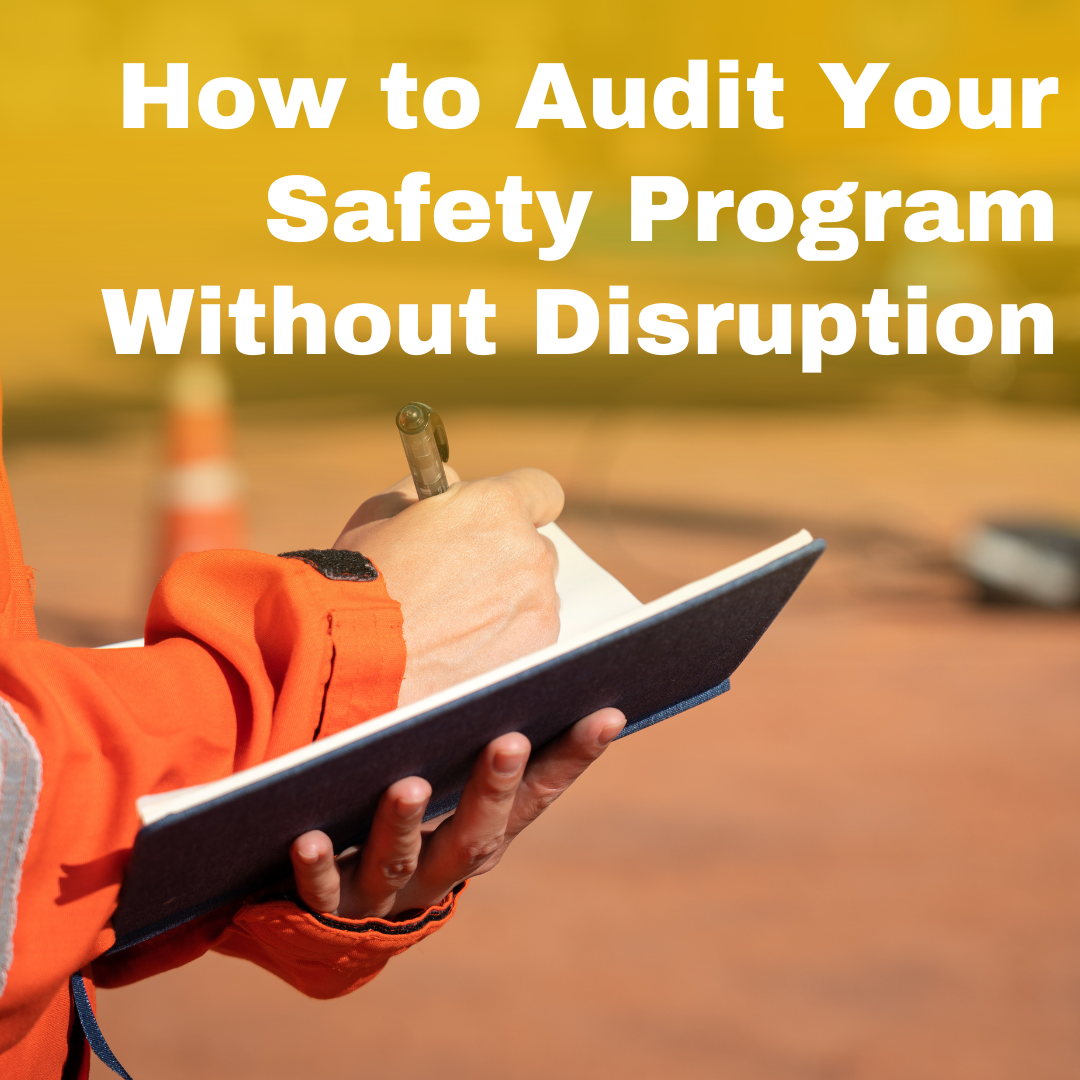How to Audit Your Safety Program Without Disruption
You walk into a jobsite to conduct a safety audit. People stop what they’re doing. Supervisors scramble to find paperwork. There’s tension in the air. Sound familiar?
It doesn’t have to be that way.
Auditing your safety program should feel like a routine checkup, not a surprise inspection. When planned properly, audits can happen while the work continues without fear or disruption.
Audits are one of the most valuable tools for improving workplace safety but they often come with anxiety, last-minute prep, and stress for your team. The good news? A well-planned safety audit doesn’t have to disrupt daily operations or put people on edge.
In fact, when done right, audits become part of how your business runs, not something that gets in the way.
Here’s how to audit your safety program thoroughly, efficiently, and without slowing down your team.
Start with the Right Mindset: It’s About Learning, Not Blame
One of the biggest reasons safety audits feel disruptive is fear, fear that the process will lead to finger-pointing, or that teams will be punished for gaps they didn’t know existed.
That mindset has to go.
A productive audit is about discovery and improvement. It’s a chance to ask:
What are we doing well?
What’s falling through the cracks?
Where can we grow?
If your team sees the audit as a way to learn and level up not as a gotcha moment, you’ll get better participation and more honest data.
Plan It Like a Project, Not a Fire Drill
A smooth, low-impact audit starts with strong preparation. Treat it like a scheduled project, not a surprise event.
Here’s how to get organized:
Set clear objectives: Are you reviewing compliance with OSHA? Evaluating internal procedures? Preparing for an external audit? Be specific.
Choose the scope: Are you auditing a single facility, department, or company-wide program? Clear boundaries reduce confusion.
Communicate early: Let supervisors and employees know the purpose of the audit, the timeline, and what to expect. This reduces stress and keeps operations moving.
Create a checklist or audit tool: Use a standardized form so the process is consistent and repeatable.
Planning ahead helps you avoid rushed walkthroughs, missing documents, or employees being caught off guard.
Use a Risk-Based Approach to Prioritize What You Audit
Not every area needs the same level of scrutiny. Focus first on high-risk operations, recent incident trends, or areas where procedures have changed.
By prioritizing:
High-hazard tasks (like confined space entry, electrical work, or machine maintenance)
Departments with new staff or high turnover
Sites with recent near-misses or injuries
…you ensure the audit focuses on what matters most to safety outcomes, not just compliance checklists.
Keep Operations Moving During the Audit
An audit doesn’t have to bring your workflow to a halt. Here’s how to keep things running:
Observe live work instead of pulling workers off the floor for interviews
Review documents digitally to avoid disrupting office staff
Audit during slow periods or off-peak shifts when possible
Use short “micro-interviews” to gather employee feedback quickly
Make it clear that you’re not there to interfere, you’re there to observe, support, and improve.
Engage Employees Without Intimidating Them
The best audits involve people, not just paperwork. Employees often know where issues are, even if they’re not documented.
Ask open-ended questions like:
“What safety concerns do you face during this task?”
“Is there anything you’d change to make your work safer?”
“Do you feel comfortable reporting near misses?”
Keep the tone supportive. Let them know this is about helping them work more safely not finding fault.
Capture What Matters, Not Just What’s Easy to Measure
It’s tempting to focus audits on things that are easy to document, like whether signs are posted or logs are filled out. But those things don’t always reflect the true state of safety.
Look deeper into:
Whether procedures are being followed in practice
If workers understand the “why” behind safety rules
How supervisors model safety leadership
Whether safety equipment is used consistently and correctly
Focus on meaningful indicators that connect to behavior, culture, and outcomes.
Close the Loop: Share Findings and Follow Through
Once the audit is complete, the most important step is what comes next. Share the findings with both leadership and employees, and outline clear next steps.
Your post-audit action plan should include:
A prioritized list of corrections and improvements
Assigned responsibilities and deadlines
Quick wins for morale (fix small issues fast)
A timeline for follow-up and verification
Be transparent. The more people understand the process and see positive change, the more they’ll support future audits.
Final Thoughts
Auditing your safety program doesn’t have to feel like a disruption. With the right mindset, solid planning, and a people-focused approach, it can become a powerful tool for building trust, reducing risk, and improving performance.
When audits are seen as a routine part of continuous improvement, not something to fear, they strengthen both your safety systems and your culture.
At Nano Safety & Security, we help companies turn audits into opportunities. Whether you're prepping for a regulatory review or building an internal audit program, we can help you do it efficiently, thoroughly, and with your team fully on board.
Here’s how we do it with our clients at Nano Safety & Security:
We start with clarity. Everyone knows why we’re auditing, what we’re looking for, and how it helps the team not just the company.
We observe work in real time. No need to pull people away from tasks. We watch, ask open questions, and give feedback on the spot.
We focus on risk, not just rules. Instead of only checking boxes, we look at what’s actually putting people at risk, and how to reduce it.
We turn findings into action. Audits aren’t about pointing fingers. They’re about closing gaps, fixing hazards, and building a stronger safety culture.
If your team dreads audits, it’s time to reframe how they’re done. With the right approach, audits become a tool for growth, not disruption.


